Surgical occlusion correction
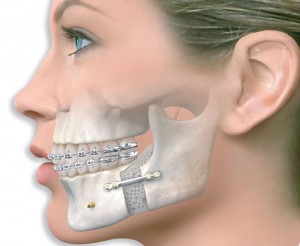
Most often, surgical removal of malocclusion is performed in adults.
However, do not be scared, because modern medicine allows surgical intervention to be carried out quickly and as painlessly as possible.
Patients who have not undergone occlusion correction in childhood, when it was possible to correct the pathology using safer and more loyal methods, can only resort to the treatment of the anomaly surgically.
Bite correction is not a whim that improves aesthetics.
An occlusion correction operation is simply necessary, as an abnormality can lead to very serious health problems.
The complications of malocclusion include the following changes:
- Speech impairment.
- Pain in the temporomandibular joint and teeth.
- Increased tooth enamel erosion.
- Destruction and loss of teeth.
- Diseases of the digestive system due to defective chewing of food.
Correction of the bite in an operative way is prescribed to adults and is the optimal solution to problems with pathology.
- The operation can be recommended in childhood if there is a serious pathology that cannot be corrected with the use of orthodontic treatment.
- In addition, surgery on the jaw solves the problem of malocclusion much faster than with plates or braces.
Indications
Jaw surgery recommended in the presence of the following symptoms:
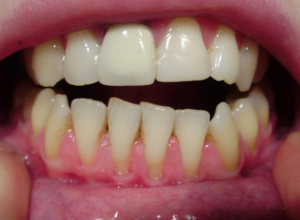
- The presence of discomfort when biting off food.
- With incomplete closing of the lips.
- If speech is disturbed.
- In violation of swallowing: when the tongue is between the dentition.
- Anomaly of the dentition associated with an imbalance in the development and growth of the jaw bones.
- The presence of pronounced violations of the relationship between the upper and lower jaw.
Contraindications
Surgical intervention is not possible with:
- Blood clotting disorder.
- Diabetes mellitus.
- Infectious diseases.
- Inadequacy of the dentition.
How is
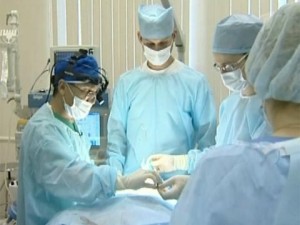
Before the operation, preparation of the patient is mandatory.
Stages of the operation:
- Assigned computer simulation of facial bones. A model of the patient’s ideal jaw is created, which serves as a sketch during the surgical procedure.
- Full examination of the patient by the attending physician.
- Surgery is performed under general anesthesia.
Operation progress
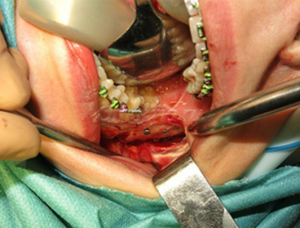
- Anesthesia (operation is performed under general anesthesia).
- Incisions are made in the oral cavity in order to free the bones of the jaw.
- Installation of the jaw bones in the correct position, followed by fixation with screws and plates.
- In conclusion, a tire is applied that fixes the position of the jaws.The tire will need to be worn for approximately two weeks.
It should be borne in mind that the course of the operation depends on the anomaly and the degree of its development.
The duration of the operation is from one to six hours and depends on the number of bones in need of correction.
Rehabilitation
The recovery period after surgery is quite long and complicated.
- To prevent infection from the first days after surgery, a course of antibiotics is prescribed.
- Immediately after surgery for a period of one day, a pressure bandage is applied to the cheeks and chin.
- While wearing tires are not recommended to chew, blow your nose and open your mouth wide.
- During the period of wearing gum, the dentist monitors their position, as well as the state of the bite.
- On the tenth - fourteenth day, the stitches are removed.
- After removing the seams, the gum is installed on the braces.
- After about three to four months, the jaw screws are removed.
Video: “Bite correction in adults”
Cost
Surgical occlusion correction is a rather expensive service, which includes prices for:
- Preoperative examination and preparation of the patient for surgical intervention.
- The cost of anesthesia and necessary medications.
- The operation.
- Expendable materials.
- Observation and consultation of the patient in the postoperative period.
The total cost of the service may be from 300 up to 450 thousand rubles.
Reviews
- A year ago, she surgically corrected an open bite, because at my age 36, orthodontic treatment was powerless. For a long time I could not decide to conduct an operation. Passed the necessary examination. Under general anesthesia, anomalies were corrected. The operation lasted four and a half hours, then walked with tires for a very long time, until everything had grown together. Almost a month postoperative edema persisted, which completely disappeared after two months. During this time, she lost almost six kilograms in weight.
- In childhood, she refused to correct a malocclusion with a bracket system. Two years ago, I decided to correct the bite surgically. The operation was successful, lasted about three hours. The rehabilitation period lasted almost two months. I was satisfied with the results.
Before and after photos
 |
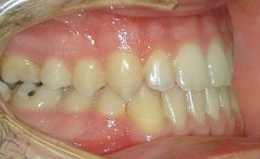 |
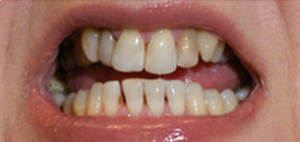 |
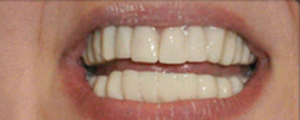 |
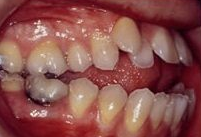 |
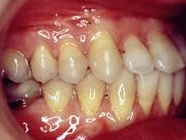 |